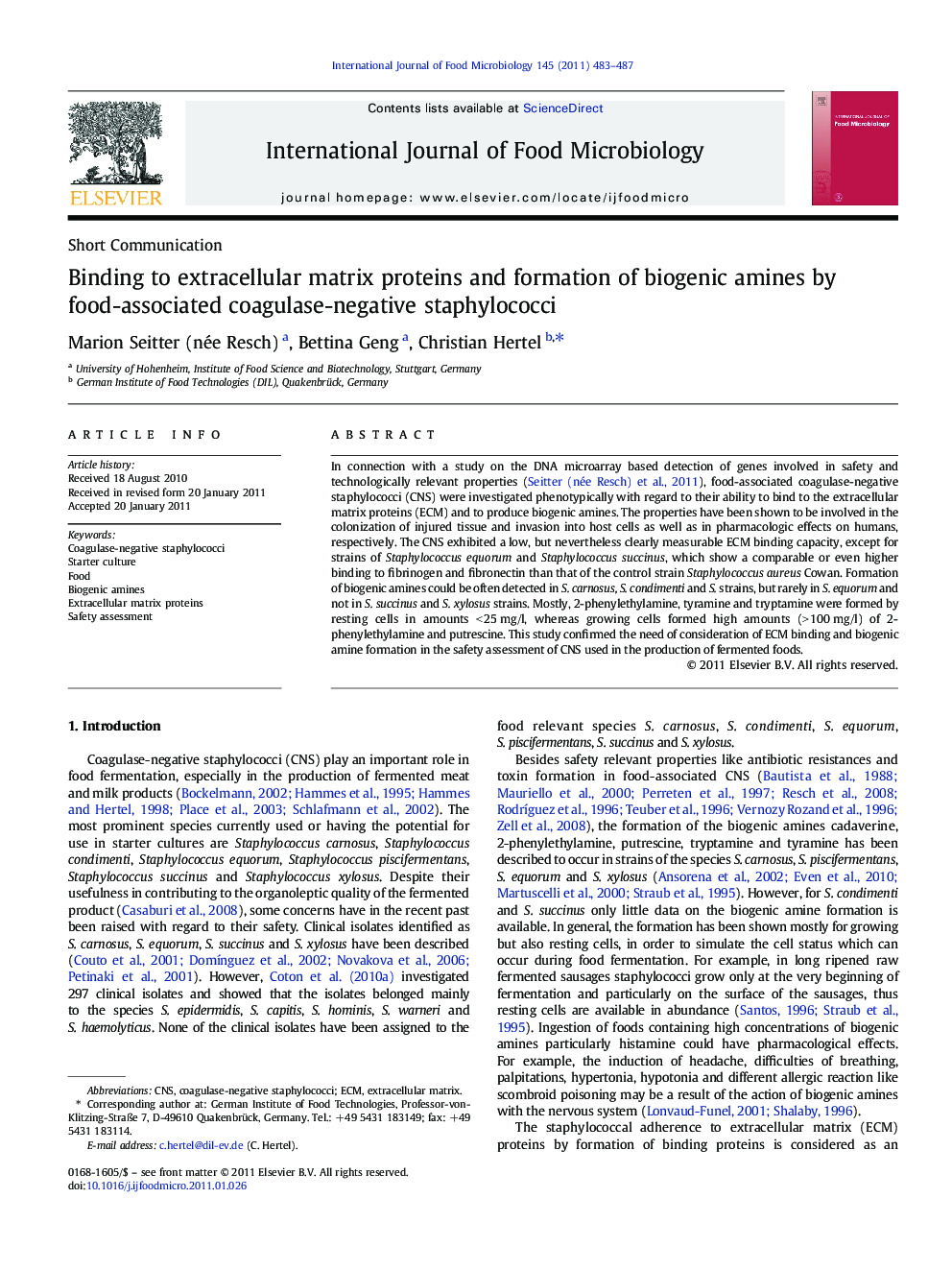| Article ID | Journal | Published Year | Pages | File Type |
|---|---|---|---|---|
| 4368054 | International Journal of Food Microbiology | 2011 | 5 Pages |
In connection with a study on the DNA microarray based detection of genes involved in safety and technologically relevant properties (Seitter (née Resch) et al., 2011), food-associated coagulase-negative staphylococci (CNS) were investigated phenotypically with regard to their ability to bind to the extracellular matrix proteins (ECM) and to produce biogenic amines. The properties have been shown to be involved in the colonization of injured tissue and invasion into host cells as well as in pharmacologic effects on humans, respectively. The CNS exhibited a low, but nevertheless clearly measurable ECM binding capacity, except for strains of Staphylococcus equorum and Staphylococcus succinus, which show a comparable or even higher binding to fibrinogen and fibronectin than that of the control strain Staphylococcus aureus Cowan. Formation of biogenic amines could be often detected in S. carnosus, S. condimenti and S. strains, but rarely in S. equorum and not in S. succinus and S. xylosus strains. Mostly, 2-phenylethylamine, tyramine and tryptamine were formed by resting cells in amounts < 25 mg/l, whereas growing cells formed high amounts (> 100 mg/l) of 2-phenylethylamine and putrescine. This study confirmed the need of consideration of ECM binding and biogenic amine formation in the safety assessment of CNS used in the production of fermented foods.
Research highlights► CNS exhibited low but nevertheless clearly measurable ECM binding capacity. ► S. equorum and S. succinus showed binding to ECM comparable to S. aureus. ► Biogenic amine formation occurred in S. carnosus, S. condiment, S. piscifermentans. ► No biogenic amine formation in S. succinus and S. xylosus.
